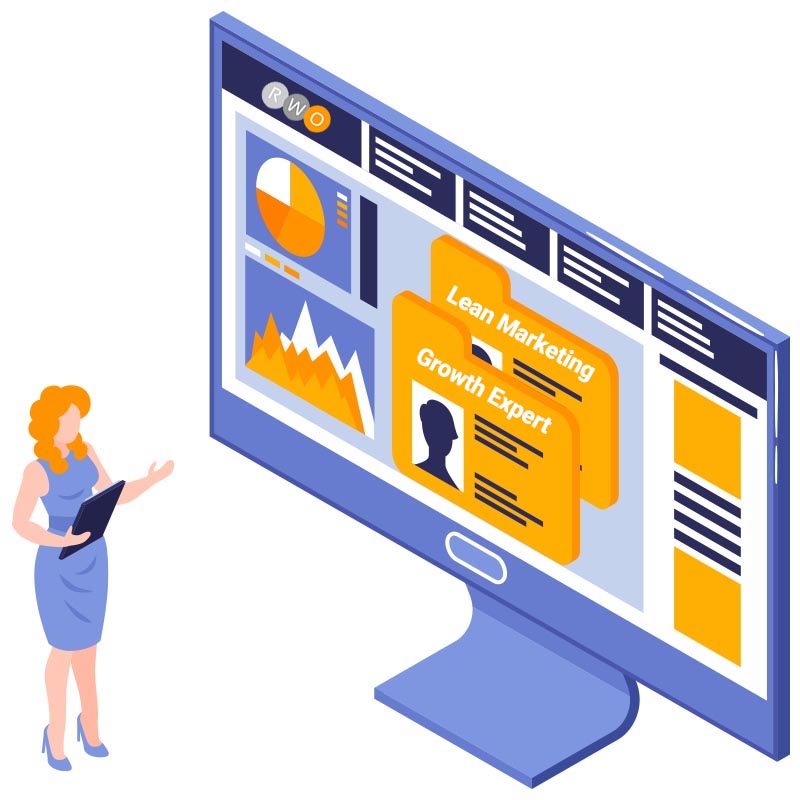How Growth Marketing for Startups Actually Works
A chat with a couple of growth marketers
Updated May 26, 2021 / Growth Marketing / Jaime & Patrick
“Both, but make sure they come in the same body.”
Acquisition Marketing Process
Jaime: Let’s talk about the acquisition marketing process. We always hear people coming to us saying “We need to do SEM. We need to do SEO. We need to do email marketing. We need to do influencer marketing.” What’s always interesting to me is they address tactical pieces immediately. Some will ask “What’s the strategy?” What I hear less about is the whole ecosystem of how all of these things work together.
Patrick: Why do you think that is? Because I experience that too – even with seasoned marketers.
Jaime: I think it’s what people know. I think these channels start to become a commodity when looked at separately where people feel they know they need certain things. Many people know they need paid search. Most people even start off with it because it’s how potential customers most immediately find your product. And then the next thing they do is they start looking into some type of content marketing. “We need a blog somewhere.” “We need to do email and look for a marketing automation solution”. I hear all these certain things. It’s a process of looking at these channels tactically. What I find is that there is a connective tissue with all of these things and a certain kind of domino effect of how these channels get executed to be truly effective towards the larger goal of the organization. One can impact the next, and they all act together in a machine-like type way in this ecosystem.
Growth Marketing in a Lean Marketing System
Patrick: Yes. Agree on all of that. One of the things you said in your reply – connective tissue – is a great hook to begin any discussion with around the overall subject of lead-gen and/or growth marketing for any lean marketing system™. Most intros begin with “I need SEM,” or “We need to get SEO going,” or “We need content.” “We need a blog.” There are the usual channels that are very clear in the marketplace that people see and hear about. But their needs within these channels, they think, are the same as everybody else’s. And what you and I do differently within each of these channels is we ask those core questions about necessity and intent, so that everything we do along that development within that channel is intentional. And the intent is always coated with glue. So whatever we do, it has a sticky element to it that is looking to bind to one of the other pieces. The example that always comes to mind for me is content. People think they need content because content is what tells the story—in all sizes, whether it’s long-form or it’s snippets; texts or tweets. But content is still very important as fuel for every channel that you use. They focus on SEM without focusing on what the content should be that supports it. Because they think of it as keywords discovery and creating ads. I had a recent discussion with someone where they said, “Well, we need to increase our click-through rates.” And I replied, “Increasing your CTRs can be problematic if your landing page and content for receiving those clicks is not adequately developed.” And so, I agree with you. It is this cohesive structure we try to build that lends to people understanding what they really need and how they need it. Most don’t understand how to develop it, how to deploy it, and how to nurture it. There’s a big variance in this growth ecosystem that we think about versus how others think about.

Jaime: Back to the thought of the line up and to the right for growth. The reason I bring this up is because this belief can affect the way one approaches growth. Here’s why. Growth tends to happen similar to s-curves being layered over each other. This concept is more akin to the concept of testing, which you’re consistently looking for your next s-curve to layer over. For example, the paid search marketing campaign, unless you’re e-commerce, there is usually a ceiling you’re going to hit, especially with qualified leads from the paid search channel. In doing so, what would be the next s-curve that you want to develop? So, for example, in our world, you and I have done, let’s say, running SEM campaigns or paid search campaigns. Seeing what words convert, and then digging into those words with research to inform, potentially, our content marketing strategy, and developing content based on those converting keywords. Those converting keywords inform our general topics, and we then build the SEO plan and strategy to execute against. This ensures that we’re looking at keywords that signal a prospect’s intent to engage with us more. It makes sense to base a content marketing strategy around these signals of a prospect’s intent. In addition, social then plays a role in promoting that content to get more views, clicks, and shares.
Patrick: Right.
Jaime: We haven’t even talked about optimizing the site and merchandising our offers across the site. So, for example, one is a free trial of the software. The other is an e-book. The other is to request a demo. Or the other is to an email newsletter offer that we have saying “Get the latest tips on this,” or “Be careful of these 5 things,” or “Learn this in 5 days.” These are all conversion rate optimization pieces that you do to the site itself. I call it merchandising. Other people might call it something else. But all of these things work in an ecosystem that creates an echo chamber where the prospect bounces around doing research and discovery till they finally hit something that resonates with them and registers. This is only one example of this ecosystem or echo chamber.
Patrick: And you talk about all the reverberations that happen because you’ve sent something out in socials. You set outbound then crossed over. And then you’ve even alluded to the interconnectivity of these channels, like SEM. For example, SEM can have the sole purpose of driving retargeting.
Jaime: Yes.
Patrick: So, your first click-through is to get them through to specific content, to allow them to inform you of their intent. And perhaps not only intent, in terms of what they want feature-wise or what they’re looking for in terms of a problem to solve, but where they focus more of their intention on in terms of content. And then, we target appropriately. This is an example of interconnective functionality allowing you to use SEM for a different purpose than most people don’t necessarily think about. Also, if you don’t implement smaller things like site extensions, landing pages, and CTAs appropriately, your channels that you promote your content on may seem ineffective. You can’t be considered lean if you’re not going to learn from what you’re doing and be able to progress which is a key to any growth program.

Perspective Analytics and Marketing Data Analysis
Updated 6/8/2023 - Perspective Analytics data analysis focuses on value-adds, iterative testing, de-risking assumptions, adaptive responses, and a culture of systemic creativity.
Marketing Frameworks for Startups – Discussion
Updated 1/12/2023 - We’re talking about marketing frameworks for start-ups which requires a flexible and growth minded marketing framework in order to discover and then accelerate growth.
The Benefits of a Lean Marketing Framework
Updated: 2/25/2023 - Modern lean marketing frameworks focus on ideation, iteration, testing, and adaptive measurement protocols to de-risk assumptions quickly and cost and resource effectively.
5 Benefits of Perspective Analytics in a Lean Marketing System™
Updated 12/3/2022 - Perspective analytics is a key element in a lean marketing system, targeting actionable insights v. data monitoring and more linear analyses from the data.
Marketing for Startups – 2 Buckets that Matter / RWO Marketing Group
Updated 8/3/2022 - Lead-gen analytics should be considered worthless unless you have a perspective analytics mindset around what your looking at, how it materialized (assumptions through end point), and where it can take you.
A Perspective on Lead Gen Analytics
Updated 9/6/2022 - Lead-gen analytics should be considered worthless unless you have a perspective analytics mindset around what your looking at, how it materialized (assumptions through end point), and where it can take you.
